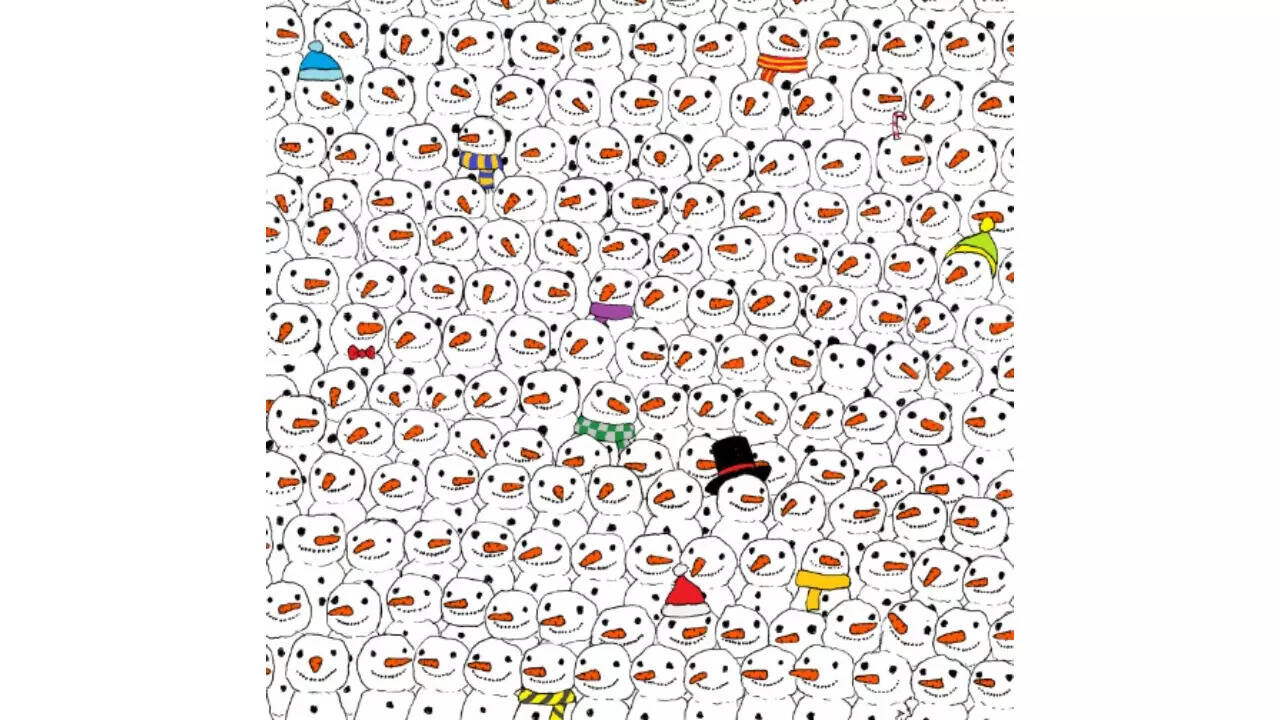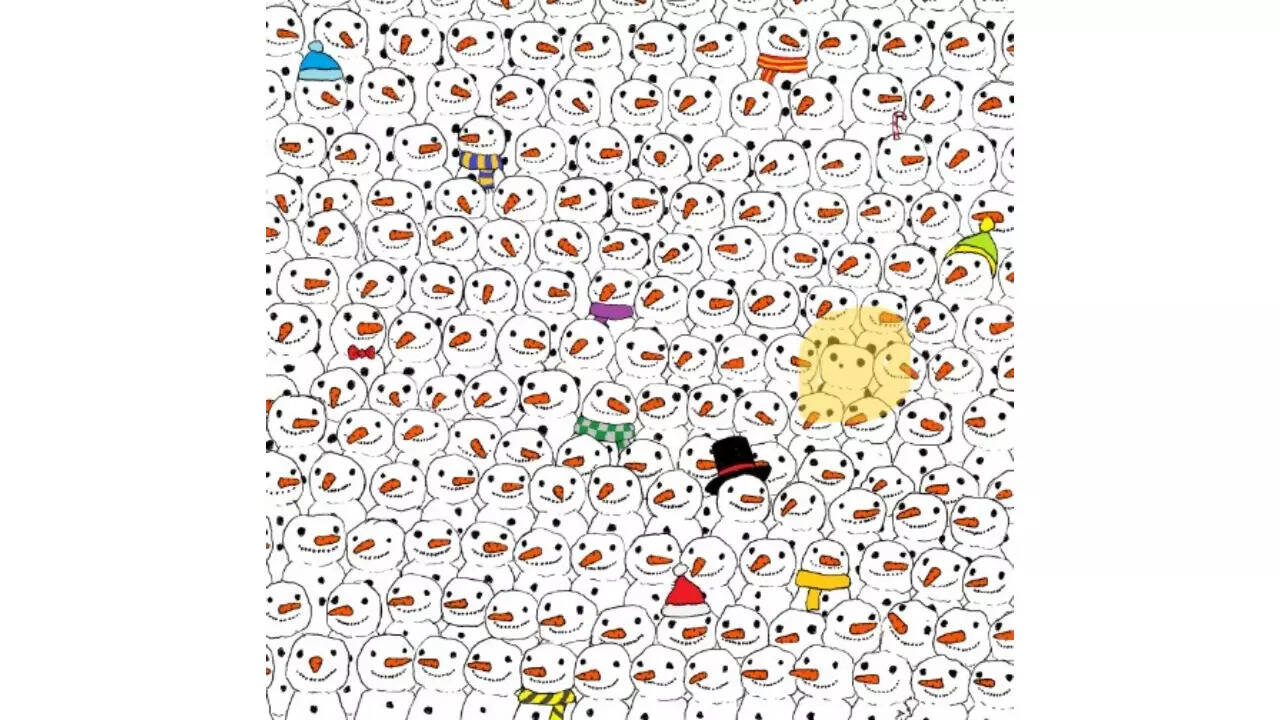
Optical illusions serve as captivating demonstrations of a psychological phenomenon known as "inattentional blindness" or "selective attention." This phenomenon occurs when our focus is directed towards a particular task or target, causing us to overlook other unexpected images or symbols within our field of vision.
This optical illusion generated significant buzz on social media after Hungarian graphic artist Gergely Dudas shared an illustration that quickly went viral.
In this particular optical illusion, viewers are challenged to locate a seemingly innocent panda hidden amidst a group of snowmen in under 10 seconds. Optical illusions push the boundaries of our perception and cognitive abilities, presenting images that intentionally confuse our minds and prevent us from recognizing the obvious. Are you ready to put your skills to the test? Your time starts now!
Ten, nine, eight, seven, six, five, four, three, two, and one! Let's see if you were able to spot the panda.
If you managed to spot the panda correctly within the given time limit, congratulations! You possess exceptional attention to detail and sharp eyesight. However, if you were unable to spot it, then here is the solution:

The panda can be spotted in the seventh row from the bottom and the eighth row from the top. In the row, the panda is the fourth object from the right and the eleventh object from the left.
If you could not find the panda within the given time limit, it indicates that you may need some more practice. Engaging with similar illusions and honing your reaction time and attention to detail can help improve your abilities.
This phenomenon is closely tied to how our brains process visual information. Our attention is a limited resource, and our brains prioritize information that is relevant to the task at hand while filtering out irrelevant details. This filtering process enables us to focus on what we consider important, but it can also lead to the oversight of unexpected or unfamiliar elements.







